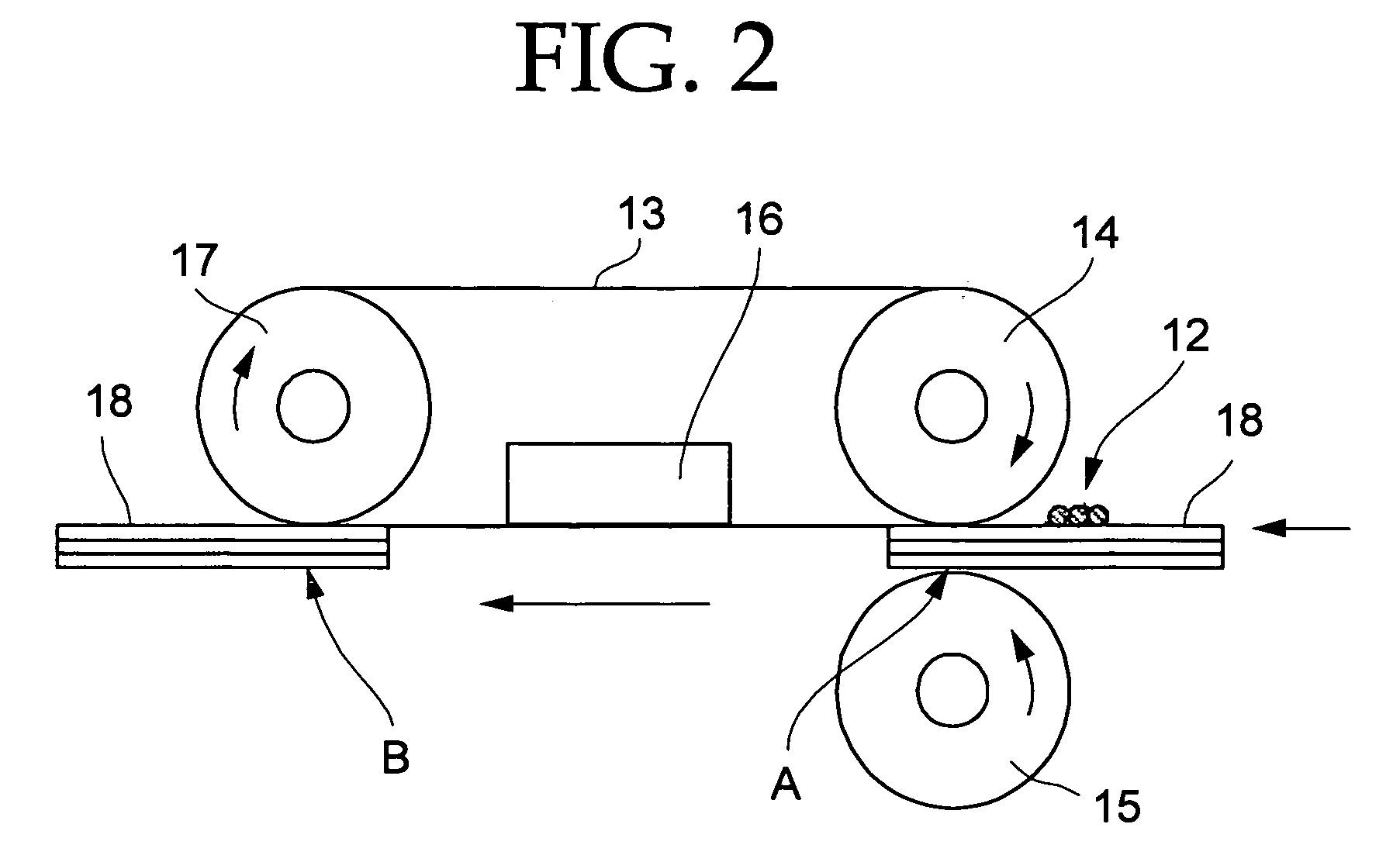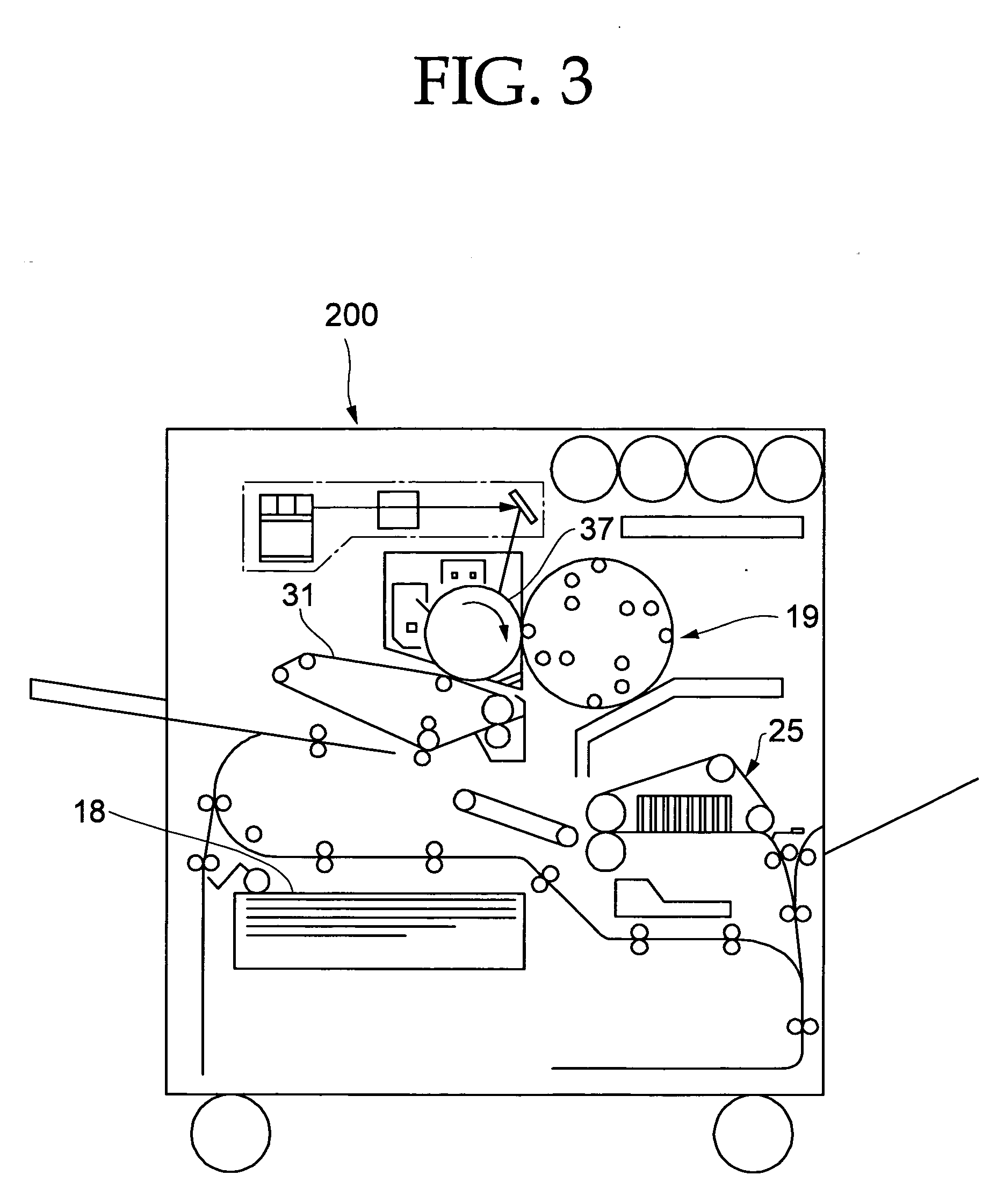Image-recording label sheet and process for image forming
a label sheet and label technology, applied in the field of image recording label sheets, can solve the problems of insufficient adhesion resistance between the label sheets and the need for an intermediate layer to possess relative high breaking extension, and achieve excellent adhesion resistance, low glass transition temperature, and the effect of preventing crazing in the label sh
- Summary
- Abstract
- Description
- Claims
- Application Information
AI Technical Summary
Benefits of technology
Problems solved by technology
Method used
Image
Examples
example 1
(Example 1)
—Production of Separator on Which Peeling Treating Layer is Disposed—
[0287] A surface of the raw paper made of a woodfree paper having a basis weight of 52 g / m2 was coated with an aqueous solution of a polyvinyl alcohol and dried, thereby disposing a sealing layer. The sealing layer was coated with a 3% by mass toluene solution of a blended resin of 100 parts by mass of a silicone resin SRX-211 (manufactured and sold by Toray Silicone Co., Ltd.) and 0.6 part by mass of a silicone resin SRX-212 (manufactured and sold by Toray Silicone Co., Ltd.) using a wire coater so that the dried coating has a thickness of 1 μm and dried at 120° C. for 2 minutes, thereby producing the separator on which a peeling treating layer was disposed.
—Production of Base—
[0288] The both surfaces of the raw paper made of a woodfree paper having a basis weight of 52 g / m2 were coated with an aqueous solution of a polyvinyl alcohol and dried to dispose a sealing layer, thereby producing the base.
—Di...
example 2
(Example 2)
[0296] In substantially the same manner as in Example 1, except that the method for disposing the intermediate layer in Example 1 was changed to a method described as follows, the label sheet of Example 2 was produced.
—Disposing of Intermediate Layer—
[0297] By mixing 5.7 parts by mass of an acryl vanish (manufactured and sold by Seiko Chemicals Co., Ltd.; trade name: Hiros BH-997L; having a glass transition temperature (Tg) of 10° C. and a breaking extension of 25.8%), 1.6 parts by mass of an polyethylene oxide (manufactured and sold by MEISEI CHEMICAL WORKS, LTD.; trade name: ALKOX R 1000) and 34.7 parts by mass of water, a coating liquid for the intermediate layer was obtained. With the obtained coating liquid for the intermediate layer, a surface of the base on which the toner image-receiving layer will be disposed was coated using a bar coater so that the dried coating has a thickness of 7 μm and dried, thereby disposing the intermediate layer on the base.
[0298] The...
example 3
(Example 3)
[0299] In substantially the same manner as in Example 1, except that the method for disposing the intermediate layer in Example 1 was changed to a method described as follows, the label sheet of Example 3 was produced.
—Disposing of Intermediate Layer—
[0300] By mixing 10 parts by mass of an acryl latex (manufactured and sold by Seiko Chemicals Co., Ltd.; trade name: Hiros HE-1066; having a glass transition temperature (Tg) of 0° C. and a breaking extension of 83.6%) and 16 parts by mass of water, a coating liquid for the intermediate layer was obtained. With the obtained coating liquid for the intermediate layer, a surface of the base on which the toner image-receiving layer will be disposed was coated using a bar coater so that the dried coating has a thickness of 7 μm and dried, thereby disposing the intermediate layer on the base.
PUM
| Property | Measurement | Unit |
|---|---|---|
| Temperature | aaaaa | aaaaa |
| Temperature | aaaaa | aaaaa |
| Temperature | aaaaa | aaaaa |
Abstract
Description
Claims
Application Information
 Login to View More
Login to View More - R&D
- Intellectual Property
- Life Sciences
- Materials
- Tech Scout
- Unparalleled Data Quality
- Higher Quality Content
- 60% Fewer Hallucinations
Browse by: Latest US Patents, China's latest patents, Technical Efficacy Thesaurus, Application Domain, Technology Topic, Popular Technical Reports.
© 2025 PatSnap. All rights reserved.Legal|Privacy policy|Modern Slavery Act Transparency Statement|Sitemap|About US| Contact US: help@patsnap.com



